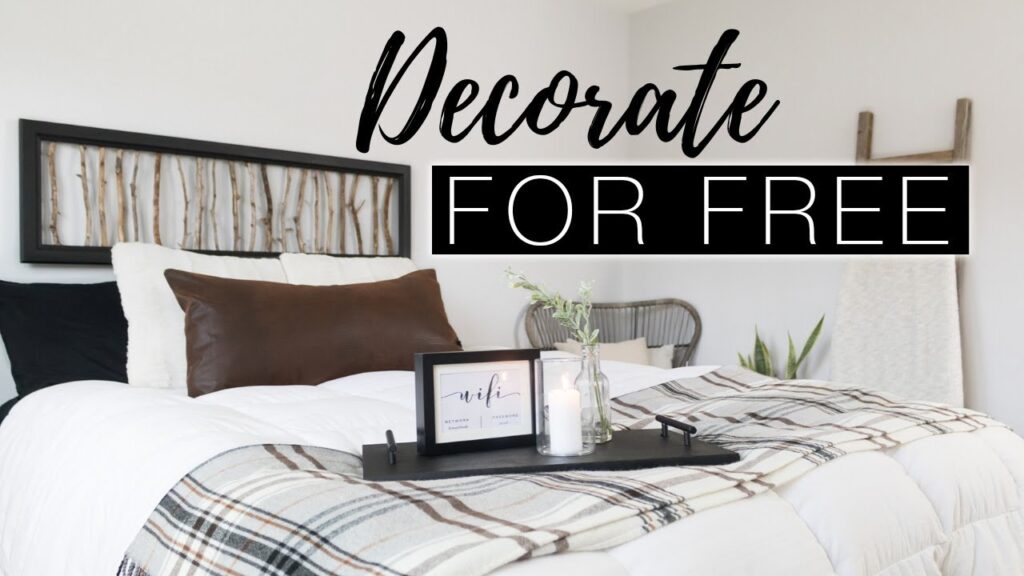If you have a bed, you’ll want to consider how to arrange wall art around it. The most effective art placement will surround the bed at least two-thirds of the way across. To ensure proper placement, use masking tape to mark the center of the headboard and the bottom edge of the artwork. Also, consider using a Hang & Level(tm) picture hanging tool to visually align the art.
Size
When purchasing wall art, you’ll want to be sure that the size will fit the space you have available. Before you purchase an item, make a mock-up of your room by laying sheets of paper or masking tape on the wall. Leave it there for several days to get a feel for the dimensions. Another way to ensure that your new artwork fits is to take photos of it on your phone.
Despite its importance, size is often overlooked when selecting wall art. The wrong size can make the art look out of place, or too small for the space. It may also make it look odd. There is no hard and fast rule for choosing wall art, but there are guidelines to help you choose the right piece of art.
Depending on the size of the room, a piece of wall art should cover up to two-thirds of the wall space. A large piece of wall art can draw the eye toward the focal point while giving the room a more formal feel. The width of a piece of wall art should not exceed two-thirds of the width of the couch or bed.
If your wall space is limited by the size of a piece of furniture, it’s best to hang a smaller piece of wall art. This size will be less difficult to hang over a piece of furniture, but you need to consider the size of the piece to ensure that it fits properly.
The height of wall art is another important consideration. The art should hang at least six inches above the top of your furniture, and the bottom should be at eye level. Depending on the decor in your room, you may need to vary the height of your piece. In general, a painting or abstract piece of wall art should be about 50 x 70 cm.
Color scheme
A neutral color scheme is a timeless and versatile choice for your bedroom. It can be contemporary, rustic, vintage, or cottage-inspired. And it’s a great choice for rooms with white walls. Incorporating wallpaper or wall art on an accent wall can add a touch of color and personality.
Changing the color of the walls and other elements in the room is a relatively inexpensive way to add a new look to your bedroom. You can paint walls yourself or hire a handyman to complete the task. You can find a color scheme that will match the furniture, carpet, and shams.
You can use brighter shades of green to liven up your bedroom. The shades of green look great together and work well with neutral colors. However, if you want to create a calmer mood, you can choose to use a more muted green. It will give a calming effect and give your bedroom a warmer and more inviting feel.
When choosing a color scheme for your bedroom wall art, consider the size and natural light in the room. If the room is dark, try using warm, soft yellows or other neutral colors. Also, consider your own personal style when selecting the color scheme. The color scheme of your bedroom should reflect your personality.
You can also try a triad color scheme. This color scheme is made up of any three colors that are evenly spaced on the color wheel. The colors are bright and vibrant, but they feel less intense than a complementary color scheme. Ideally, you’ll let one color dominate the room and accent it with the other two colors. Using a triad color scheme is a versatile choice that will add interest and sophistication to your room.
Frame style
When you’re arranging wall art in your bedroom, you have to choose a style that suits your aesthetic. A framed piece of artwork can be an excellent way to set the mood. A framed quote or inspirational photo can make the perfect addition to your bedroom. You can choose the style and colour of the frame to match your artwork.
You can also mix and match frame styles for a more eclectic look. Just remember that the art is for you and should have some personal significance. Hanging art that you don’t like will not add value to the room. Instead, choose a piece that appeals to you and makes you feel good about yourself.
If you’d like to have a large grouping of pieces, you should consider a frame style that features multiple frames. You can hang one frame above another or two frames side-by-side. This will make the space look more balanced and give you the freedom to add more frames in the future. If you’d like to hang two frames side-by-side, you’ll want to leave a little space between them. A space of 1.5 to 2.5 inches between each frame is a good rule of thumb.
If you’re unsure of what style of frame you need for a particular piece of art, consider creating a gallery wall. This type of wall art will work best with multiple pieces of artwork and is great for rented apartments. It also enhances the wider room and coordinates the colour scheme.
When you’re arranging wall art in your bedroom, consider the style and size of the frames. Generally, a piece should have a different size than its frame, and it should also have a different style from the others. Try to avoid clusters of wood frames, or frames that are identical in color or design.
Hanging height
Hanging height is a key consideration for hanging artwork over the bed. It should be a minimum of half the width of the bed. You should also make sure that the artwork is positioned at the center of the headboard. You can mark this point with masking tape to ensure a good alignment visually.
The correct hanging height is 57 to 60 inches from the floor. You may need to add additional inches for hooks. If you have a high ceiling, you may want to hang the artwork higher. However, if you’re short, the artwork’s height can be adjusted to 60 inches.
Depending on the artwork’s size, the correct hanging height can make or break the overall look of the room. Try to center a group of three to four pieces on the wall to avoid it looking out of proportion. For example, hanging three identical pieces of artwork on a wall with a 60-inch gap would result in the look of a cluttered and disjointed room.
The proper height for wall art in the bedroom should be at least 57 inches, from the center of the picture to the top of the picture’s wire. However, you can raise the height of the artwork a few inches higher if the ceiling is higher than 12 feet. The bottom edge of the frame should be 8 to 15 inches higher than the furniture.
Most wall art is meant to attract the eye of the people who live in the room. Choosing a height that is appropriate for most people is easy – just measure the edge of the frame. The height of a frame should be 57 to 65 inches high, but you should adjust these measurements to accommodate people of different heights.
Size and dimensions
There are a few important factors to consider when buying wall art for a bedroom. First, make sure you know the width of the furniture and the wall space above it. Ideally, art should be 60-80% of the width of the furniture. A queen-size bed, for example, measures 60 inches in width. This means that a large piece of art hanging over it should be 36 to 48 inches wide. The best way to gauge the right size is to do a mock-up to see the size of the space.
Second, determine the style and size of the art. You can also take photos of the pieces in different sizes and compare them on your phone. Lastly, check the placement of the artwork. Buying a piece of wall art that is too large or too small can throw the whole room off.
Third, consider the size of the wall. If the art will hang high, it needs to be proportionate to the height of the wall. It also needs to be proportional to the height of the bed and the furniture on it. If you are unsure, you can mark the possible dimensions with a pencil to visualize where to hang the art.



